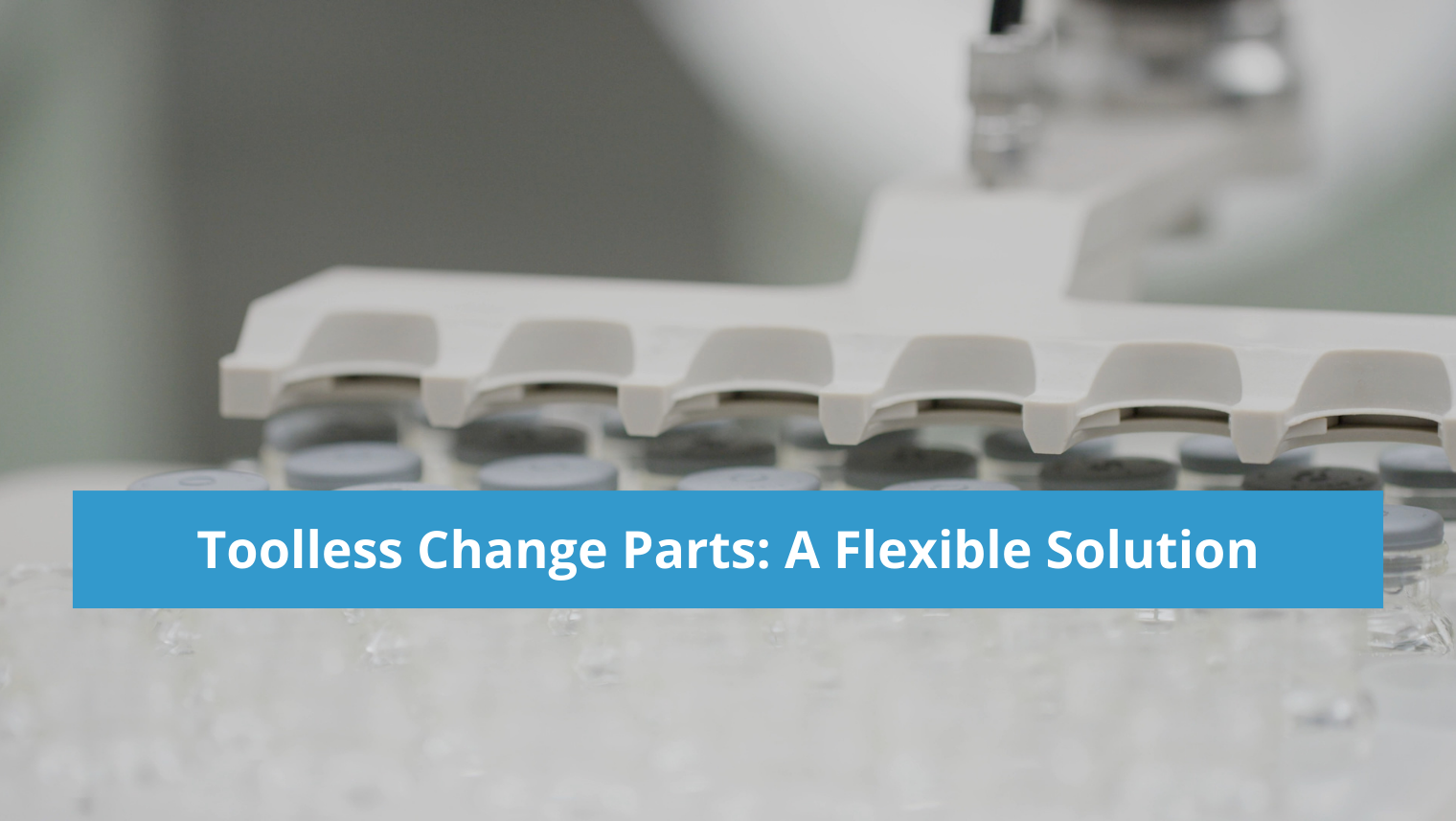Aseptic fill-finish professionals are continually looking to augment their approach to a market that continues to grow and reflect innovations happening around sterile parenteral treatments. When considering the flexibility of an operation, it’s important to investigate every aspect of the fill-finish process. Flexibility applies to any process or technical optimization that quickens scalability and removes friction points in the drug development process. Automation and robotics in and of themselves offer game-changing adaptability, and getting the most out of such solutions is key. The right approach to change parts and operational changeover goes hand in hand with leveraging automated strategies.
An As-Needed Approach to Fill-Finish Change Parts
Traditionally, change parts have been expensive, time-intensive features to install and remove from a machine and can be subject to improper setup or adjustment by the operator. At best, these instances delay an operation, and at worst they can risk damaging valuable equipment and products. In a non-robotic setting particularly, change parts are the enemy of flexibility, not its ally. Conversely, a robotic approach opens up new possibilities for change parts and changeover time. Finding a fill-finish partner that not only employs this approach but is committed to finding innovative ways to effectively reduce the number of change parts going forward will provide ongoing opportunities for growth and development.
Recipe-Driven, Toolless Aseptic Solutions
The full scope of the drug development process, from research and development to commercial distribution, as well as the multi-format, multi-product demands of pharmaceutical operations such as CDMOs, necessitates a fully optimized strategy. Recipe-driven change parts designed for toolless install save crucial time at every stage of aseptic processing. A set of well-designed change parts should be able to be installed in an hour or less, causing minimal machine downtime. Additionally, when both recipes and technologies can scale to growth or stage of development, the need for time-consuming revalidation measures is reduced.
Quality and Usability
Change parts themselves should have the quality and durability to meet the demands of aseptic fill-finish processing, and also be operator-friendly to ensure seamless installation. Other important criteria to look for in a machine’s change part features include:
- Parts that can be sterilized easily and effectively, compatible with measures such as autoclaving
- Compatible with aseptic decontamination protocols such as vaporized hydrogen peroxide (VHP)
- Parts that are replaceable and backed by a stocked, responsive aftermarket supply partner
- Designed to be “mistake-proof,” only able to be installed correctly, protecting both the machine equipment and operation uptime
AST’s fill-finish systems are designed with minimal, as-needed change parts that are completely recipe-driven, autoclavable, and materially compatible with closed barrier sterilization measures. With ultimate flexibility in mind, a trained operator can complete installation on our largest system in 15 minutes or less.
Learn how these innovative solutions can be provided to your organization with the highest quality aseptic processing machines – contact our experts today.




